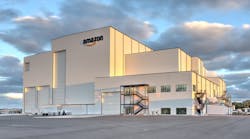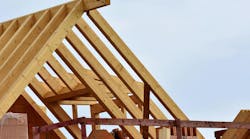New book provides energy efficiency guidance for hotels
When visiting your next hotel this summer, check to see if energy efficiency is on the amenities list. If it’s not, it should be.
Recommendations on achieving 30% energy savings over minimum code requirements are contained in the newly published Advanced Energy Design Guide for Highway Lodging. The energy savings guidance for design of new hotels provides a first step toward achieving a net-zero-energy building.
“The recommendations allow the building industry to create more energy-efficient hotels while maintaining the quality and functionality of the space to provide a pleasant guest experience,” said Ron Jarnagin, chair of the committee that wrote the book.
The book, published by ASHRAE, gives guidance to architects, engineers, contractors and other building team members on how to easily achieve advanced levels of energy savings without having to resort to detailed calculations or analyses. A few tips on how to achieve energy savings now are included below.
Written in partnership with The American Institute of Architects, the Illuminating Engineering Society of North America, the U.S. Green Building Council, and the U.S. Department of Energy, the book is available for free in electronic form at www.ashrae.org/freeaedg. Hard copies are available for purchase in the ASHRAE Bookstore through the same Web page.
The Guide focuses on typical hotels found along highways that have up to 80 rooms, generally four stories or less, that use unitary heating and air-conditioning equipment. Buildings of these types with these HVAC&R configurations represent a significant amount of commercial hotel space in the United States.
Examples of advanced highway lodging energy designs are provided in case studies to illustrate the recommendations and the flexibility offering in achieving the energy savings in the Guide.
Although the guidance targets new hotels, some of the design tips included in the guide that allow hotels to save energy immediately are appropriate for existing hotels as well:
Lighting:
* In interior corridors, lighting often runs 24 hours a day. This is an area for possible daylight savings from top lighting (skylights) or occupancy sensors that reduce lighting when the space is unoccupied.
* Use compact fluorescent lighting in downlights, wall sconces, and table lamps. Use incandescent lighting sparingly, such as in accent lighting of artwork or highlighting of special architectural features in the lobby. Use translucent wall sconces and table lamps to better light the space and patrons’ faces.
* Use compact fluorescent fixtures with electronic ballasts in all plug-in table and floor lamps in guest rooms, lobbies and common areas
Hot Water:
* The least expensive means of reducing service water heating energy consumption is by reducing service hot water consumption. Lower-flow shower heads can reduce hot water demand during showers from approximately 1.8 gpm to less than 1.5 gpm. Low-flow lavatory faucets can produce similar hot water usage reductions for each lavatory.
Laundry Service:
* Laundering of bed linens and towels consumes significant amounts of energy in highway lodging facilities. Water-conserving commercial washers consume roughly 25 percent less water per pound of laundry than conventional commercial washers and extract significantly more water from the load thus reducing the energy use required by the dryer.
The cost of the print version of Advanced Energy Design Guide for Highway Lodging, is $62 ($53 members). To download the free electronic version, please visit www.ashrae.org/freeaedg.
To order a print copy of the book, contact ASHRAE Customer Service at 1-800-527-4723 (United States and Canada) or 404-636-8400 (worldwide), fax 404-321-5478, or visit at www.ashrae.org/bookstore.

